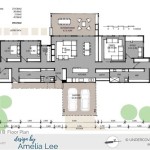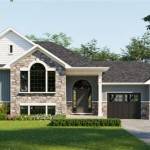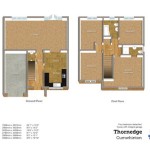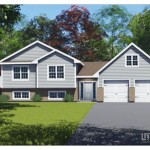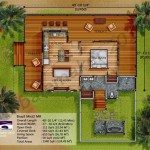1-Level House Plans with Basement: Expanding Living Space and Functionality
One-level living has become increasingly popular for its accessibility and ease of movement. However, the desire for ample space often necessitates creative solutions. Incorporating a basement into a single-story house plan provides an excellent opportunity to expand living areas without adding a second floor, offering a versatile space that can be adapted to a variety of needs.
The advantages of a 1-level house with a basement are numerous. Eliminating stairs improves accessibility for individuals with mobility limitations, making it a practical choice for aging in place. Ranch-style homes, a popular one-level design, often feature basements, enhancing their functionality and overall value. Furthermore, a basement allows for increased storage, reducing clutter in the main living areas and providing a dedicated space for seasonal items or recreational equipment.
Cost considerations are a significant factor in any building project. While adding a basement typically increases the initial construction cost compared to a simple slab foundation, it can significantly boost the home's resale value. The additional square footage provided by a finished basement is often assessed at a lower rate per square foot than above-ground space, offering a cost-effective way to expand living area. The return on investment can be substantial, especially in areas where larger homes are in demand.
Design considerations for 1-level houses with basements are crucial to maximizing functionality and aesthetic appeal. Careful planning is essential to ensure seamless integration between the main level and the basement. Walk-out basements, which offer direct access to the backyard, are a highly desirable feature, blurring the lines between indoor and outdoor living. Large windows and well-placed doors can maximize natural light and ventilation, creating a bright and inviting space.
Several popular layouts effectively incorporate a basement into a single-story design. Open-concept ranch plans often feature a basement that mirrors the layout of the main level, creating a cohesive flow between the two spaces. Split-level ranch plans can utilize the basement to create distinct zones for different activities, such as a dedicated entertainment area or a home office. L-shaped ranch plans can incorporate a walk-out basement into the design, creating a private patio or outdoor living space.
Finishing a basement provides the opportunity to customize the space to meet specific needs. Common uses for finished basements include additional bedrooms and bathrooms, home theaters, game rooms, home gyms, and hobby spaces. Creating comfortable living spaces in the basement requires careful attention to insulation, moisture control, and lighting. Proper ventilation is essential to prevent moisture buildup and maintain a healthy indoor environment.
Building codes and regulations regarding basements vary by location. It is essential to research local building codes related to egress windows, ceiling height, and ventilation before finalizing any basement plans. Compliance with these regulations ensures safety and avoids potential issues during the permitting process. Consulting with experienced builders and architects is highly recommended to navigate local regulations and ensure the project meets all requirements.
Energy efficiency is an important consideration when planning a basement. Proper insulation can significantly reduce energy costs by minimizing heat loss in the winter and heat gain in the summer. Insulating basement walls, floors, and ceilings helps to maintain a consistent temperature throughout the home and reduce strain on the HVAC system. High-performance windows and doors can further enhance energy efficiency, while airtight construction minimizes drafts and further reduces energy consumption.
Accessibility features can be seamlessly integrated into 1-level house plans with basements. Wide doorways and hallways facilitate easy movement for individuals using wheelchairs or other mobility aids. Installing an elevator or lift provides access between the main level and the basement, further enhancing accessibility for all occupants. Incorporating these features during the initial construction phase ensures that the home remains functional and accessible for years to come.
Landscaping plays a vital role in the overall aesthetic of a 1-level house with a basement. Grading the land around a walk-out basement allows for a seamless transition between the indoor and outdoor spaces. Patios, decks, and landscaping features can create inviting outdoor living areas that complement the basement design. Careful consideration of drainage and water management is crucial to prevent water intrusion into the basement and maintain the integrity of the foundation.
Maintenance is an ongoing aspect of homeownership. Regularly inspecting and maintaining the basement is crucial to preventing potential problems. Checking for signs of moisture, cracks in the foundation, and proper functioning of sump pumps can help identify issues early and prevent costly repairs. Maintaining proper drainage around the foundation and ensuring adequate ventilation can help prevent moisture-related problems and ensure the longevity of the basement.

Single Floor House Plans With Basement Elegant E Story 28 Images 1 St One

Simple House Floor Plans 3 Bedroom 1 Story With Basement Home Design 1661 Sf Basementdesignflo One New

Small Cottage Plan With Walkout Basement Floor

3 Bedroom 2 Bath Ranch House Floor Plans With Basement And Porch
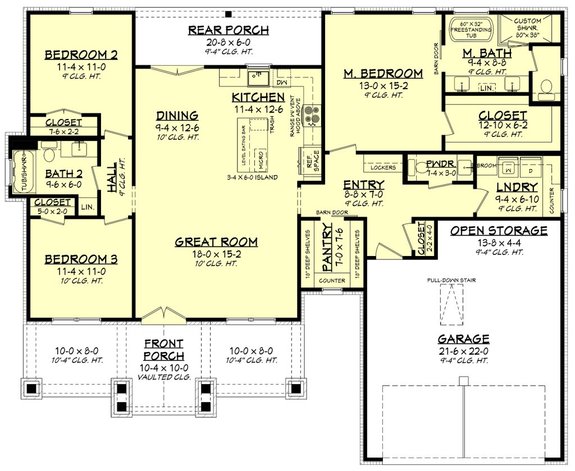
Versatile Spacious House Plans With Basements Houseplans Blog Com

Small Cottage Plan With Walkout Basement Floor

One Story Living With Walkout Basement 86200hh Architectural Designs House Plans

Hillside House Plan Modern Daylight Home Design With Basement

Craftsman House Plan With Walk Out Basement 4968

House Designs Single Floor Low Cost Plans 3 Bedroom With Basement Ranch


